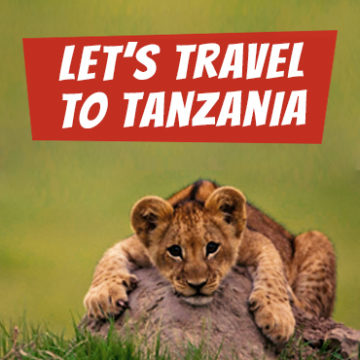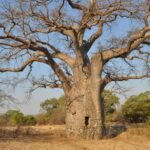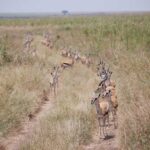When it comes to Africa trip, the Serengeti National Park in Tanzania seems to be the perfect destination to encounter different types of antelopes. In fact, the Serengeti National Park is located in the northern part of Tanzania. It covers about 14,763 squared kilometers and its endless plains in the northern part is stretching to Masai Mara Reserve in Kenya while in the southern part is adjoining Ngorongoro Conservation Area. It is mostly famous for its huge herds of plains animals especially wildebeests, zebras, gazelles, antelopes and other many animals, it is the only place in Africa where land animal migrations are still taking place. Since 1981 Serengeti is part of UNESCO World Heritage, the park is home to more than 500 species of birds and 300 species of mammals including 16 different types of antelopes that I describe here below.
Types of Antelopes in Serengeti
During your game drives in Serengeti National Park you will easily spot different antelopes species, the following list will help you to recognize each species and remember the main characteristics. Let’s start our list…
Wildebeest
Also known as the gnu, is among the largest type of antelopes. You can’t exclude this animal when talking about the Great Migration in Serengeti. About 2 million wildebeests migrate from Sourthern Serengeti to Masai Mara Reserve in Kenya and come back to Tanzania through the southern part of Serengeti especially at Ndutu area, this is a continuous process in a cyclic manner year after year grabbing the attention of visitors. Below are few characteristics of this animal
- It is a large antelope measuring between 45 and 55 inches at the shoulder and weighing between 300 and 600 pounds.
- The different subspecies of the wildebeest vary in color, ranging from slate gray to dark brown, with males darker than females.
- They are highly adorable hunt for the predators like spotted hyena and lion.
- Wildebeests measure between 5 and 8 feet in length and have a tail length of 14 to 22 inches.
- Wildebeests have a long, rectangular shaped head.
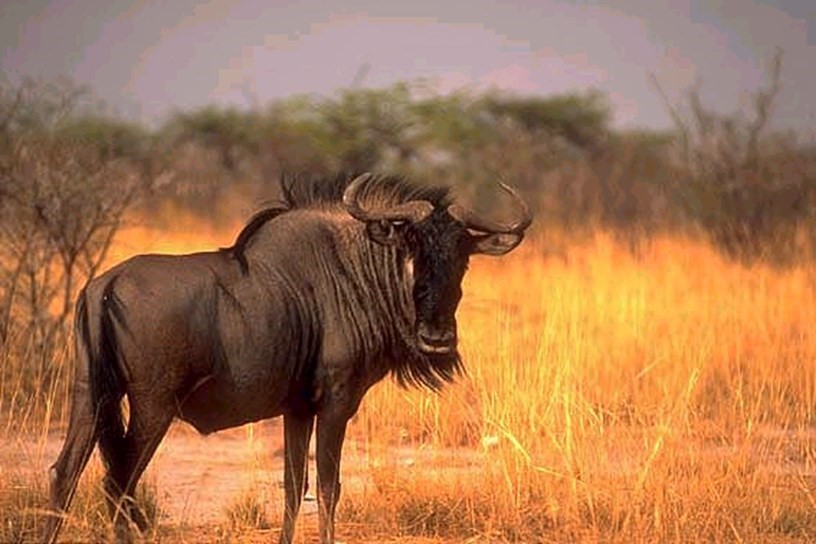
Eland
This is one of the African savanna’s most enduring animal inhabitants. The animal is remarkable for its striking coat and impressive, ox-like build. The eland is also the largest type of antelopes. The males reach a shoulder height of 1.5 meters and a weight up to a ton. The females are slightly smaller and lighter than the males.
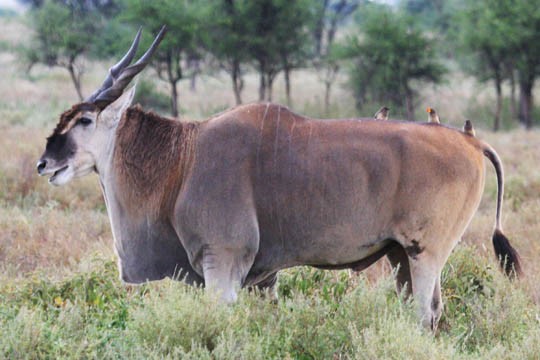
Lesser Kudu
This is another interesting kind of antelopes mostly found in warm climates areas. During safari, this antelope is bit difficult to encounter since they are not many, you can spot it in the Southwestern Serengeti. Lesser kudu is lighter in weight and has a shorter stature at 92-108 kg and 100 cm respectively. On the other hand, the lesser kudus does not depend much on the water for their survival, rather they get water requirements from the parts of fresh wild fruits and only take water if available.
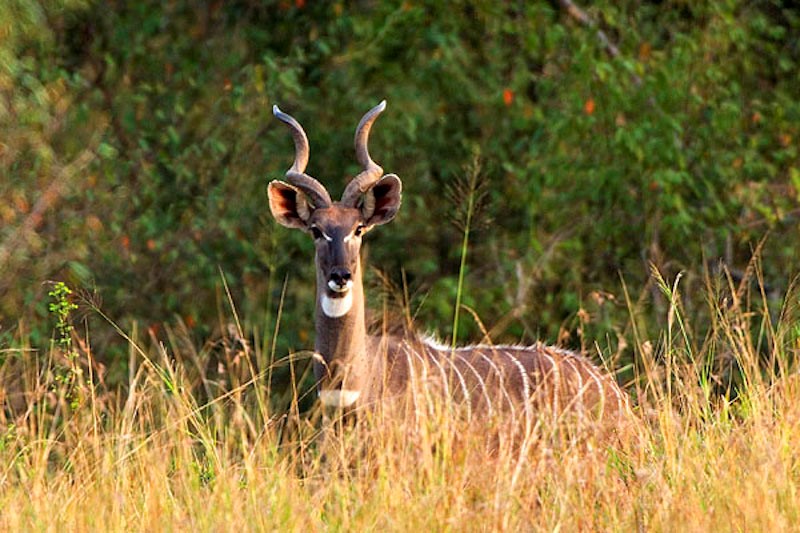
Reedbuck
Its habitat is the grasslands and marshes of Serengeti, you can identify this antelope looking at the round glandular spot below each ear. They graze at night and are looking for shelter during the day time. Females give birth to a single calf after the gestation period of almost 7.5 months. Males have curved horns that point forward. Also this kind of antelope has no fixed breeding season.
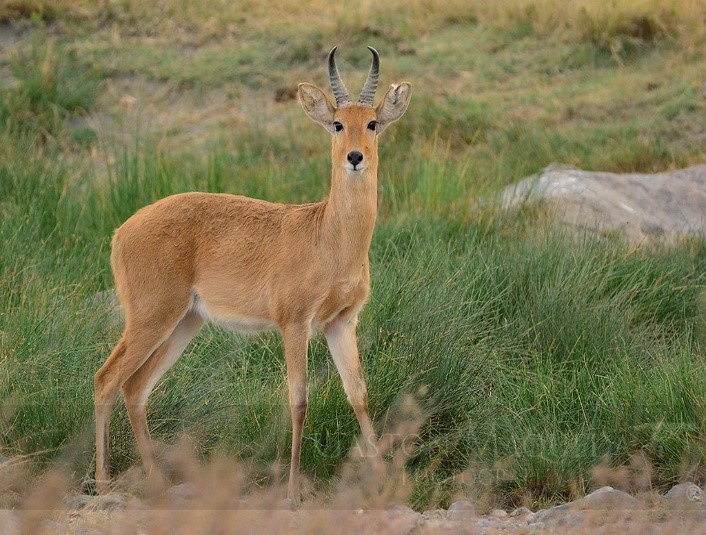
East African Oryx
Hopefully you should be lucky to meet this antelope during your game drives in Serengeti although they are few remaining. This animal is territorial and uses its speed as a defensive mechanism from predators. The interesting characteristic of this animal is being able to detect rainfall 50 miles or more away.
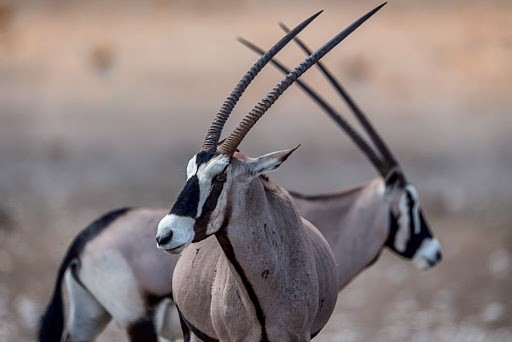
Grant’s Gazelle
Its scientific name is Gazella Granti, sometimes it is easy to confuse this animal type from Thomson’s Gazelle, the different is that, Thomson’s Gazelle are in smaller size and has the white patch on its rump while Grant’s gazelles are bigger and has the patch always extends above the tail. Always grant’s gazelles color and size of the horn are varied.
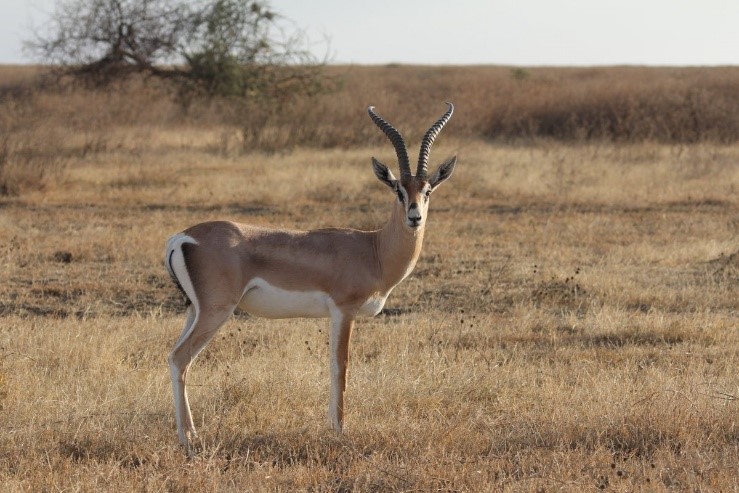
Thomson’s Gazelle
Named after the researcher Joseph Thomson, they have light brown coats with dark stripes down their sides, you can distinguish a Thomson’s Gazelle from a Grant’s Gazelle by its smaller size and the white patch on its rump. The males have longer horns than the females and they used to migrate toward the better available sources of food and water during the dry season. They also have strong senses of hearing, sight and smell balance.
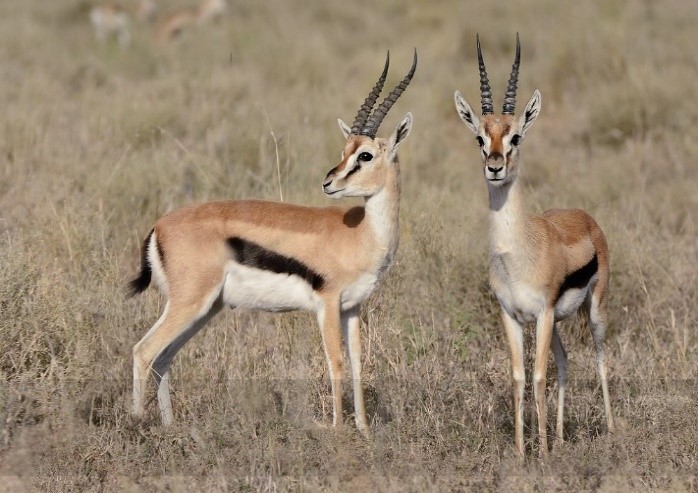
Waterbuck
They have large rounded ears and white patches above the eyes and around the nose. You identify them by their white circular drawing on the rump, which also gave these animals their name. Also their coat has a water repellent oil layer that protects them from moisture. Last but not least, these animals mostly like to stay close to the water.
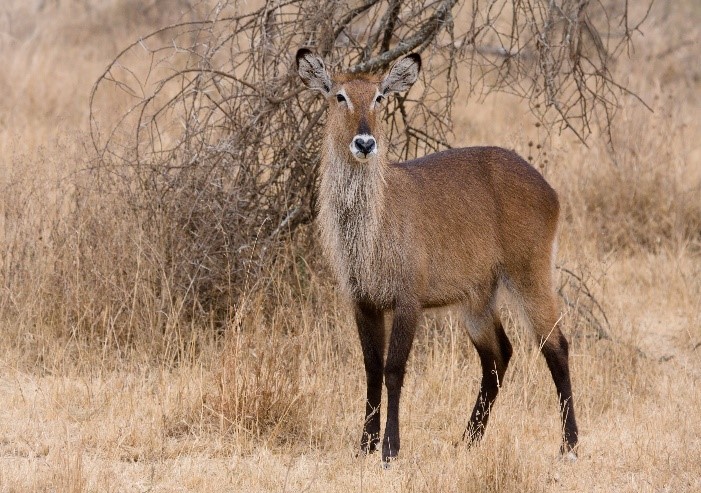
Hartebeest
During your safari in Serengeti, you mostly meet this kind of antelopes in medium and tall grasslands, including savannas. Regarding the diet, it is not selective since it is tolerant even to poor food quality. Gestation period for this animal takes almost 8 months. Cheetahs, lions, hyenas and leopards can hunt the hartebeest. This antelope can give birth every year although most of the time breeding peaks depend on food availability.
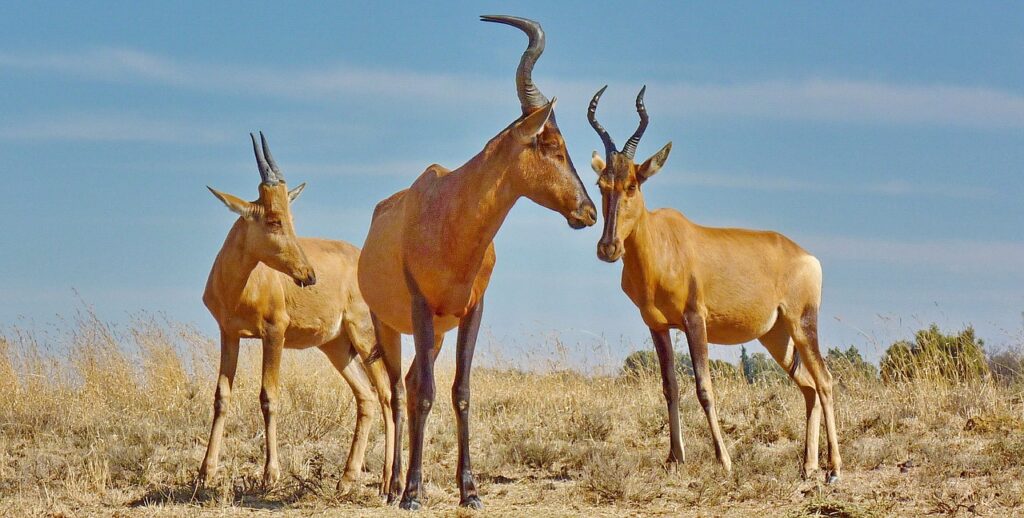
Klipspringer
Klipspringer is a small antelope weighing between 8 and 18 kg with females weighing slightly more than males. It has a short neck, body and large hindquarters which help it jump from rock to rock easily and is mostly found in the Rocky Mountains. The color of this animal can vary from grizzled tan, gray and brown depending on location. You can easily identify a klipspringer looking at its ears that are rounded and large and also their tails are small and rudimentary.
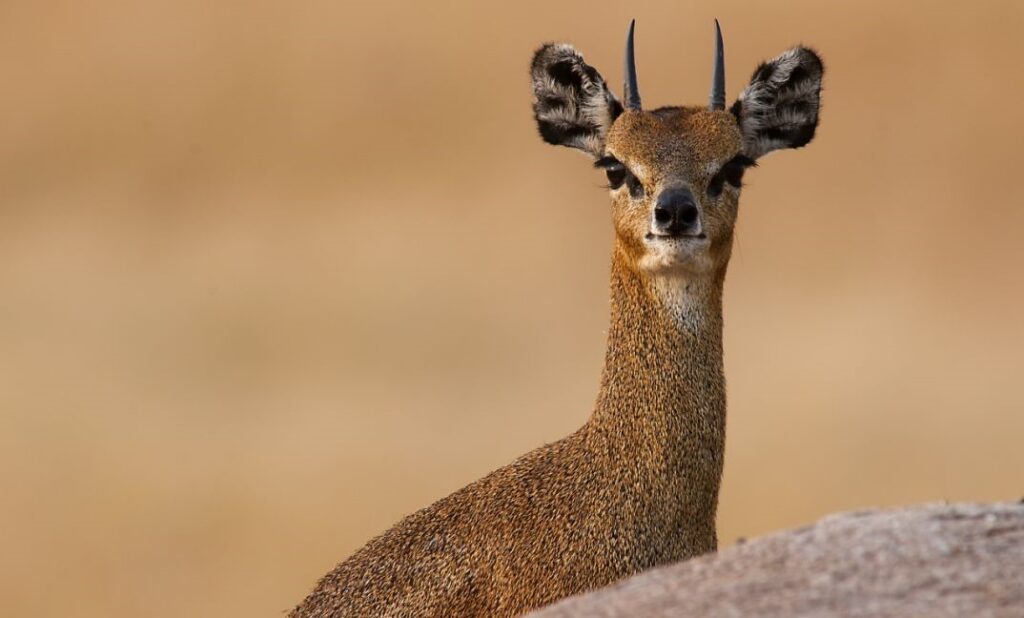
Bushbuck
This is the forest edge antelope. You find it in the rainforests, bush savannas and other related areas. It is a solitary animal with the ability to jump 6 foot high fences. This animal moves slowly and quietly when feeding and carefully selecting its food. Interesting fact for this kind of antelope is that it can freeze or lay to the ground when attacked. The difference between males and females from this family is that, male possess horns while females don’t.
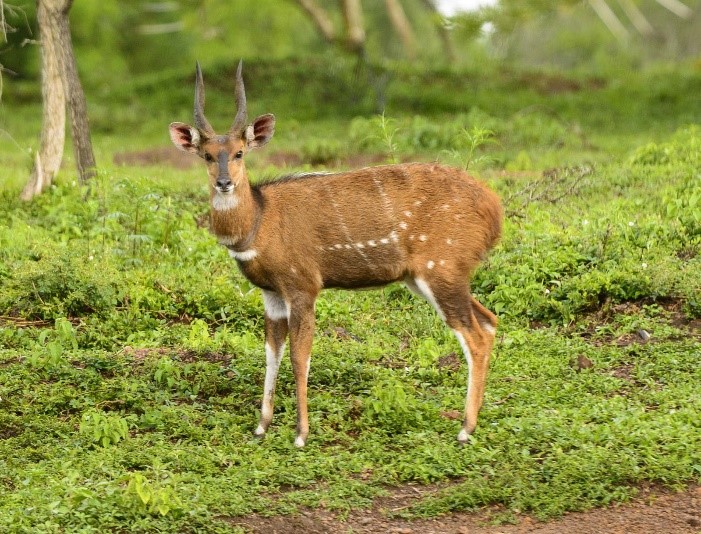
Impala
You can easily distinguished from other antelopes by having the black spots on the feet and an elongated white spot above the eyes. During your visit in Serengeti, you don’t need to use more effort to distinguish male and female from this family, since males have horns while the females don’t. When it comes to drink water, they drink during the hottest time of the day to stay safe from their predators since predators used to rest during the hottest time.

Oribi
It is a type of antelopes that avoids staying in areas dominated by shrubs, bushes and trees and areas of higher density. You identify it by looking its long neck, spiky horns that are slightly curved and slender ears. It prefers eating short grass, mainly due to their size and stature. Females used to reach their sexual maturity in almost 10 months and males take up to 14 months. Amazing characteristic of this antelope is that it can run up to 25 to 31 miles per hour.
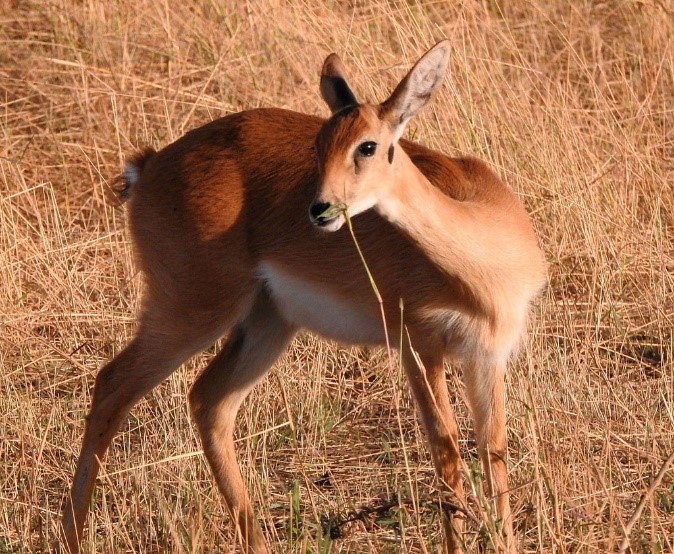
Steenbok
It’s also known as the Dwarf antelope due to its small size, the main feature of this antelope type is the black spot or scent gland located below each ear, thus the big factor making it easily identifiable. Females are a little larger compared to males. Furthermore, the Steenbok is mostly loved since it is a cute and small antelope. They love more young leaves, as well as shoot tips from plants, flowers and fruits.

Dik-Dik
The name comes from the unusual alarm call that the females commonly make, which sounds like a wheezing and whistling “zik-zik” or “dik-dik”. These antelopes were called “dik-diks” by the early settlers and hunters as they ruined the hunter’s chances of shooting any larger game. Dik dik are territorial and use dung, urine and scent to mark the boundaries. The curious behavior of this animals is that, when attacked they run in a zigzag way to confuse their enemies, although in the meantime due to small size they are easily targeted by cheetahs, leopards and other predators.
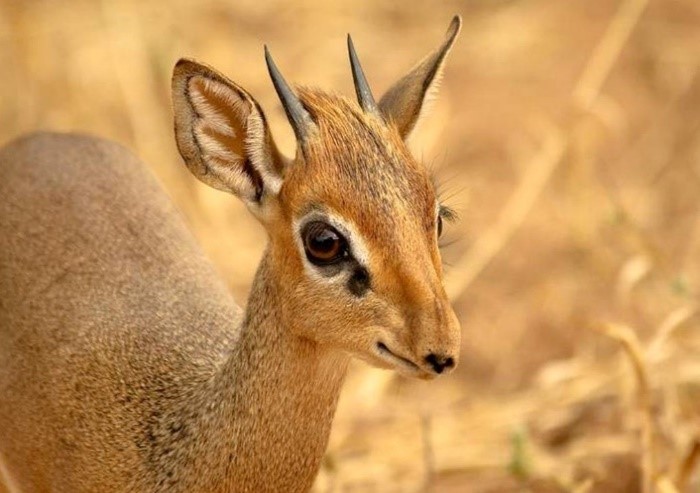
Topi
They are always medium sized with a striking reddish brown to purplish red coat. Their favorite habitat is flood plains although sometimes they are found in dry areas. If they access green pasture they used to stay for a long time without taking water. The gregarious topis spend much of their life with other antelopes such as wildebeest. Topis are most active in the morning and evening, then resting in shade during the hot hours.
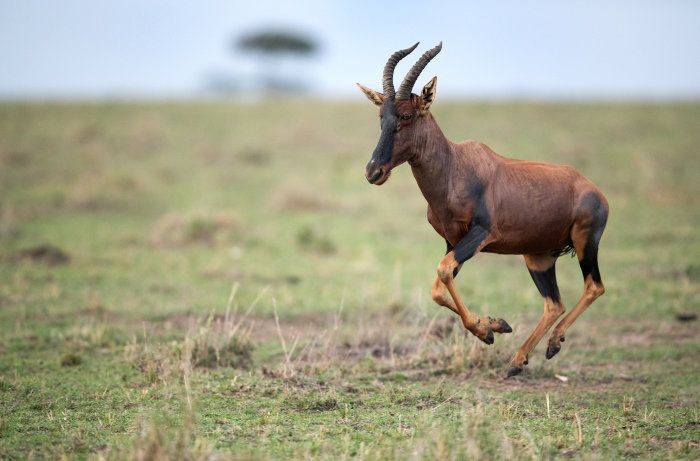
Gerenuk
This animal is easily identified by having a long neck and leg as its main characteristics. Also the other feature of this animal is that, only the males have horns but females don’t. It has light brown or tawny colored fur and is mostly living in areas with very few trees and sometimes in desert regions. It is one of the most exclusive browsers and always prefers succulent plants. Gerenuk is considered as a very humble animal due to the way they used to help each other.
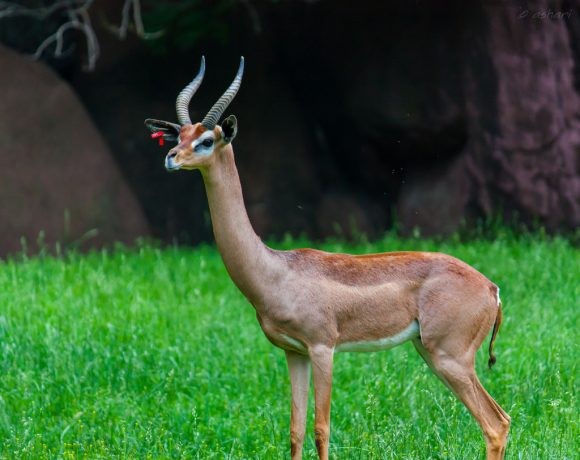
7 days/6 nights for Serengeti and Ngorongoro.
The best safari itineraries to spot different types of antelopes in Serengeti, Tanzania. For the below itineraries suggested, you visit even some other parks although in Serengeti you stay many days since is the main targeted destination for this trip.
DAY 1: ARRIVAL
Program: Pick up customers at Kilimanjaro airport and transfer to Karatu.
Activities: If you have time you can stop in the local markets on the way, otherwise you can relax at the lodge.
Accommodation: Dinner and overnight at the lodge/campsite.
FROM DAY 2 TO DAY 5: SERENGETI PARK
Program: After breakfast we leave Karatu village and enter Ngorongoro Conservation Area. We proceed crossing Ngorongoro Highlands until Serengeti gate, here we start the game drive for these 4 days.
Activities: game drive.
Serengeti Park is the most famous park of all Africa, more than 15,000 squared kilometers of savannah full of lions, leopards, cheetahs, giraffes, elephants and many other wild animals.
Accommodation: Dinner and overnight at the lodge/campsite.
DAY 6: NGORONGORO CRATER
Program: After breakfast we drive to Ngorongoro Conservation Area, today we descend into Ngorongoro crater for game drive with pic-nic lunch.
Activities: game drive.
The Ngorongoro Crater is a must-see while on safari in Tanzania for its high density of wild animals. The Ngorongoro Conservation Area is a conservation project where the Maasai and their livestock live together with wild animals.
Accommodation: Dinner and overnight at the lodge/campsite.
DAY 7: DEPARTURE
Program: After breakfast relax at the lodge or shopping if you have time, then transfer to Arusha or Kilimanjaro airport.
Contact our office to book your safari in Tanzania: info@savannahexplorers.com – WhatsApp +255765972458





